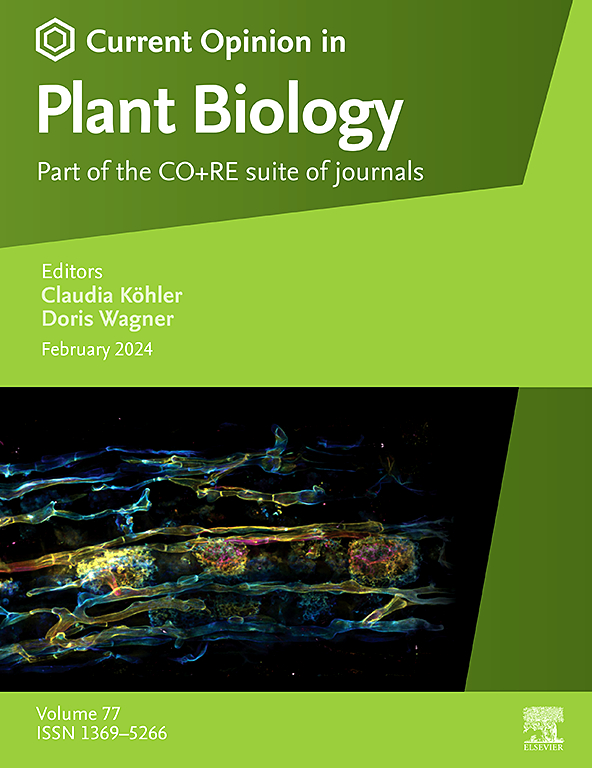Deciphering actomyosin functions in plant cytokinesis: A half-century odyssey
IF 7.5
2区 生物学
Q1 PLANT SCIENCES
引用次数: 0
Abstract
Half a century ago, it was discovered that in somatic plant cells actin microfilaments play a critical role in division plane orientation but not in cell plate assembly during cytokinesis. Because plant cytokinesis is brought about by the microtubule-based phragmoplast, the actomyosin system must be required for the centrifugally expanding phragmoplast to recognize the cortical division zone established by the microtubular preprophase band (PPB). It has been intriguing to learn how the two cytoskeletal elements communicate with each other in the two temporally separated cytokinetic apparatuses of the PPB and the phragmoplast. Half a century later, it is now clear that the PPB recruits the actomyosin system to the cortical division zone where the Myosin XI motors form macromolecular assemblies with Kinesin-12 motors and other microtubule-associated proteins. These Cytoskeleton-Associated Motor assemblies at the PPB site (CAMPs) play critical roles in the maintenance of the division site established by the PPB. They receive microtubules emanating from the edge of the expanding phragmoplast so that the developing cell plate can be inserted into the spatially defined position. Therefore, the actomyosin system joins microtubules to orchestrate the recognition of the PPB-defined position by the phragmoplast in order to execute cytokinesis in a spatiotemporally regulated manner in somatic plant cells.
破译肌动球蛋白在植物细胞分裂中的功能:半个世纪的奥德赛。
半个世纪前,人们发现在体细胞植物细胞中,肌动蛋白微丝在细胞质分裂过程中对分裂平面定向起关键作用,但在细胞板组装中不起作用。由于植物细胞分裂是由基于微管的片质体引起的,因此离心扩张的片质体识别由微管前期带(PPB)建立的皮质分裂区必须需要肌动球蛋白系统。在PPB和膜质体这两个暂时分离的细胞动力学装置中,这两个细胞骨架元件是如何相互交流的,这是一个有趣的研究。半个世纪后,现在已经清楚PPB将肌动球蛋白系统招募到皮层分裂区,在那里肌动蛋白XI马达与肌动蛋白12马达和其他微管相关蛋白形成大分子组装。这些位于PPB位点的细胞骨架相关马达组件(camp)在PPB建立的分裂位点的维护中起着关键作用。它们接收从扩展的膜质体边缘发出的微管,以便发育中的细胞板可以插入到空间定义的位置。因此,肌动球蛋白系统加入微管,协调片质体对ppb定义位置的识别,以便在体细胞中以时空调节的方式执行细胞分裂。
本文章由计算机程序翻译,如有差异,请以英文原文为准。
求助全文
约1分钟内获得全文
求助全文
来源期刊

Current opinion in plant biology
生物-植物科学
CiteScore
16.30
自引率
3.20%
发文量
131
审稿时长
6-12 weeks
期刊介绍:
Current Opinion in Plant Biology builds on Elsevier's reputation for excellence in scientific publishing and long-standing commitment to communicating high quality reproducible research. It is part of the Current Opinion and Research (CO+RE) suite of journals. All CO+RE journals leverage the Current Opinion legacy - of editorial excellence, high-impact, and global reach - to ensure they are a widely read resource that is integral to scientists' workflow.
 求助内容:
求助内容: 应助结果提醒方式:
应助结果提醒方式:


